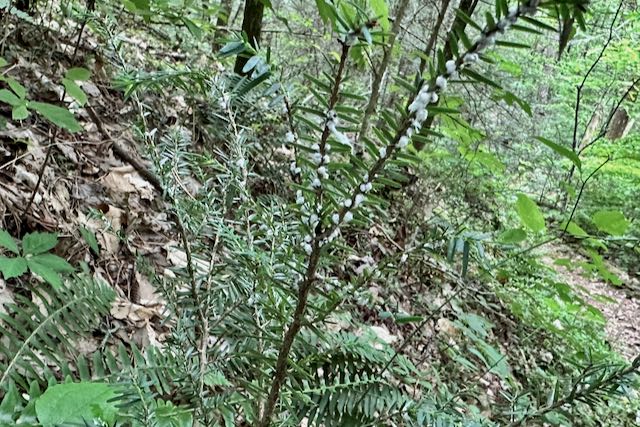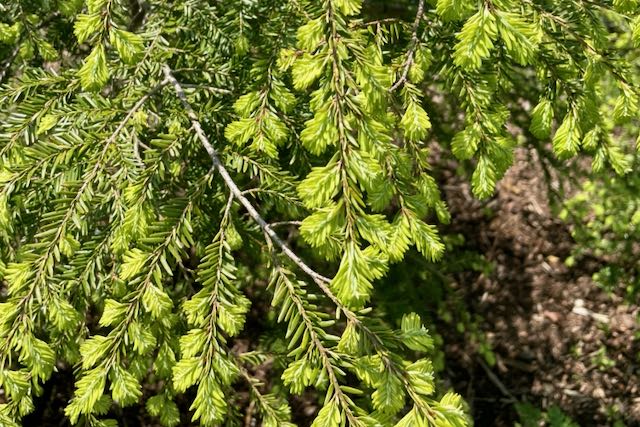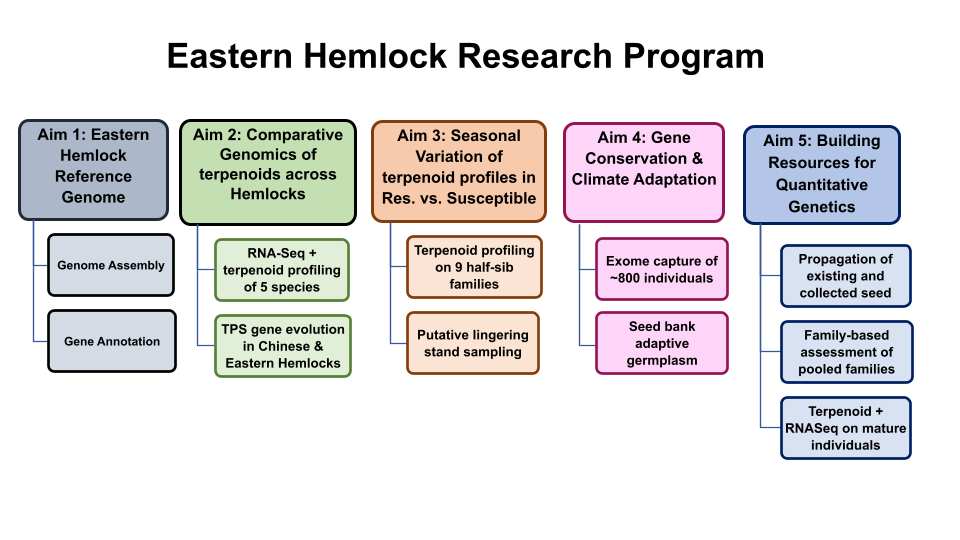Hemlock Conservation
Creating the infrastructure for Hemlock conservation.
Hemlocks (Tsuga) are a geuns of temperate forest trees critically important in their ecosystems. In eastern North American forests, the Eastern Hemlock (T. canadensis) is a keystone species, providing numerous services like carbon cycling, water quality stabilization, and habitat for organisms (plant, animal, and fungi alike). Unfortunately, both the Eastern Hemlock and the Carolina Hemlock (T. caroliniana) are imperiled by an invasive pest.
In the early 20th century the hemlock woolly adelgid (HWA) was introduced into Richmond, Virginia, an event which would have devastating consequences for eastern forests. The HWA is a sap-feeding insect that can kill hemlocks in as few as four years. Millions of acres of hemlock have been lost in recent decades, leading the IUCN to list the Eastern Hemlock as near threatened.
Despite the sustained threats of population collapse from the adelgid and climate change, there is hope for the recovery of the species. Working with scientists from the University of Michigan, USDA Forest Service, Natural Resources Canada, the Holden Arobretum, and others, we are developing a conservation program for the Eastern Hemlock. Using princpiles of genomics, plant breeding, and ecology, we are creating the genomic and germ plasm resources to create solutions for the complex problems the species faces.




In the PCG, we are starting from first principles of conservation genomics: reference genome sequencing followed by population surveys.
Sequence the genome of an eastern hemlock from an accession growing in the Arnold Arboretum (Aim 1). Using comparative genomic methods, we are investigating patterns of evolution on terpenoid synthase (TPS) genes which biosynthesize terpenoids, an important class of molecules invovled in numerous ecological interactions. Again, our sample is dervied from collaborations with the Arnold Arboretum and with the USDA Forest Service Northern Research Station (Aim 2). With our partners from the Cernak Lab we are investigating terpeonid metabolism in hemlocks across seasonal vartion and among Tsuga (Aim 3). Apative loci detection with mixed models. Results infer seed collections for germplasm resource conservation (Aim 4). These aims will result in building resources to establish a breeding program (Aim 5).